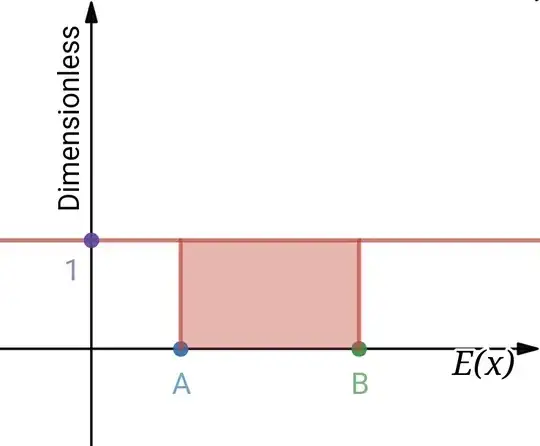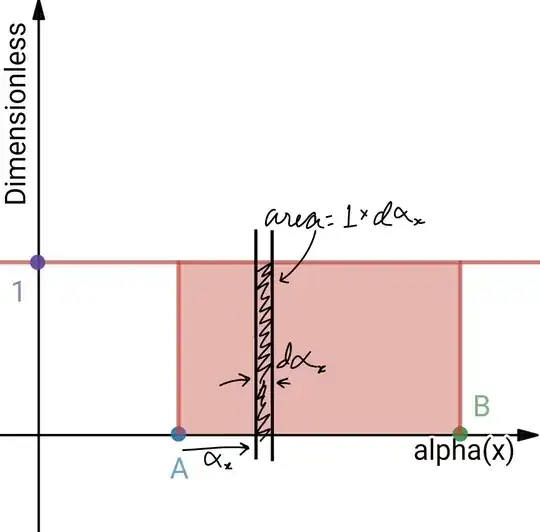Say you want to find the electric field, $\vec{E}$, at some point in space, $P$, which is induced by some uniformly charged rod, $Q$, of known length, $L$. What you would do is break this charged rod up into infinitesimally small portions of charge $\mathrm{d}q$, and sum up the infinite number of the infinitesimally small electric field contributions at point P induced by $\mathrm{d}q$.
One could then say that the electric field induced by $Q$ at point $P$ is \begin{equation} \vec{E} = \int_a^b \mathrm{d}\vec{E} \end{equation}
Knowing that $\mathrm{d}\vec{E} = \dfrac{k\mathrm{d}q}{r^{2}}\hat{r}$ where $r$ is the distance from the infinitesimal charge, $\mathrm{d}q$, to the point $P$, we could then solve this question using known values.
Where my confusion lies is in the intuition behind this integral. I can make sense of the problem stated above by instead doing something like this where is sum all of the infinitely many infinitesimal electric field contributions
\begin{equation} \vec{E} = \lim_{n \to \infty} \sum_{i = 1}^n \Delta \vec{E}_{i} \end{equation}
Using $\Delta \vec{E} = \dfrac{k\Delta q}{r^2}\hat{r}$, $\Delta q = \dfrac{Q}{L} \Delta x$ and $\Delta x = \dfrac{b - a}{n}$ where $b$, and $a$ are the beginning and ending points of the uniformly charged rod on a Cartesian x,y plane, we can say
\begin{equation} \vec{E} = \lim_{n \to \infty}\sum_{i = 1}^{n} \frac{kQ\hat{r_{i}}}{Lr_{i}^{2}} \Delta x \end{equation}
where $r$ is a function of $x$ with $x$ representing the position of $\Delta q$ along the rod.
I can then recognize how that this is a Riemann sum, and convert it to an integral to solve the question.
With this method, I am able to easily conceptualize and understand what is happening when I arrive at the integral; however with $\vec{E} = \displaystyle\int_{a}^{b} \mathrm{d}\vec{E}$ I don't maintain the same level of intuition. What I see is that for some reason we are finding the area under a dimensionless curve f(x) (of the form $F(x) = \displaystyle\int f(x) \mathrm{d}x$), and for some reason this area equals the total electric field.
I fully understand whats going on when I think of it as a discrete sum of small electric fields, but I am unable to maintain the same level of intuition when thinking about it as a discrete integral where we are summing infinitesimal vector areas? What is this invisible $f(x) = 1$? What does the area under a constant function have to do with summing up infinitesimal vectors?

